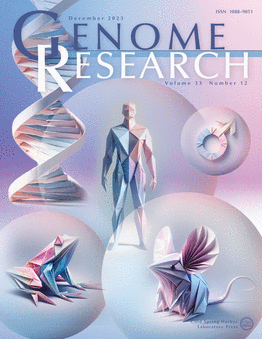对活化神经元的元分析揭示了对不同类别替代剪接的动态调控
IF 5.5
2区 生物学
Q1 BIOCHEMISTRY & MOLECULAR BIOLOGY
引用次数: 0
摘要
神经元中活性依赖基因的表达是公认的,但很少有研究检测活性依赖的选择性剪接。选择性剪接调节95%的基因,对多种神经元功能至关重要,包括突触发育和钙通道多样性。选择性剪接受rna结合蛋白的表达和活性以及局部染色质环境的改变所调节。迄今为止,大多数对活性依赖性选择性剪接的分析主要集中在微外显子上,微外显子是神经元特异性外显子的一个小亚类。为了扩大对神经元中活性依赖性选择性剪接的认识,我们分析了五个独立的RNA-seq研究,以确定对氯化钾(KCl)去极化一致响应的剪接事件。我们发现,大多数活性依赖外显子在激活后变得较少,基本构成,不是微外显子,并且存在于KCl处理后没有差异表达的基因中。在功能上,RNA加工机制和调节因子的选择性剪接先于与神经元功能相关的基因的剪接。鉴于最近在阐明染色质介导的脑选择性剪接方面的进展,我们探索了组蛋白修饰在活性依赖外显子上的一致调节。我们发现H3K36me3和H4K20me1在kcl依赖外显子的一个子集上发生了kcl依赖的变化,这表明活性依赖组蛋白修饰和选择性剪接的协调。总之,这些发现确定了一类不同的活动依赖的选择性剪接,并描述了其在培养神经元中的调节的时代性和特征。本文章由计算机程序翻译,如有差异,请以英文原文为准。
Meta-analysis of activated neurons reveals dynamic regulation of diverse classes of alternative splicing
Activity-dependent gene expression in neurons is well-established, yet few studies have examined activity-dependent alternative splicing. Alternative splicing regulates >95% of genes and is essential to diverse neuronal functions, including synapse development and calcium channel diversity. Alternative splicing is regulated by the expression and activity of RNA-binding proteins and through changes in the local chromatin environment. To date, most analyses of activity-dependent alternative splicing are focus primarily on microexons, a small subclass of neuron-specific exons. To broaden knowledge of activity-dependent alternative splicing in neurons, we analyzed five independent RNA-seq studies to identify splicing events that consistently respond to potassium chloride (KCl) depolarization. We found that the majority of activity-dependent exons become less included upon activation, are basally constitutive, are not microexons, and reside in genes that are not differentially expressed after KCl treatment. Functionally, alternative splicing of RNA processing machinery and regulators precedes splicing of genes related to neuronal function. Given recent advances in elucidating chromatin-mediated alternative splicing in brain, we explored the coincident regulation of histone modifications over activity-dependent exons. We found KCl-dependent changes in H3K36me3 and H4K20me1, both enriched in active gene bodies, over a subset of KCl-dependent exons, suggesting coordination of activity-dependent histone modification and alternative splicing. Together, these findings identify a diverse class of activity-dependent alternative splicing and describes the temporality and features of its regulation in cultured neurons.
求助全文
通过发布文献求助,成功后即可免费获取论文全文。
去求助
来源期刊

Genome research
生物-生化与分子生物学
CiteScore
12.40
自引率
1.40%
发文量
140
审稿时长
6 months
期刊介绍:
Launched in 1995, Genome Research is an international, continuously published, peer-reviewed journal that focuses on research that provides novel insights into the genome biology of all organisms, including advances in genomic medicine.
Among the topics considered by the journal are genome structure and function, comparative genomics, molecular evolution, genome-scale quantitative and population genetics, proteomics, epigenomics, and systems biology. The journal also features exciting gene discoveries and reports of cutting-edge computational biology and high-throughput methodologies.
New data in these areas are published as research papers, or methods and resource reports that provide novel information on technologies or tools that will be of interest to a broad readership. Complete data sets are presented electronically on the journal''s web site where appropriate. The journal also provides Reviews, Perspectives, and Insight/Outlook articles, which present commentary on the latest advances published both here and elsewhere, placing such progress in its broader biological context.
 求助内容:
求助内容: 应助结果提醒方式:
应助结果提醒方式:


